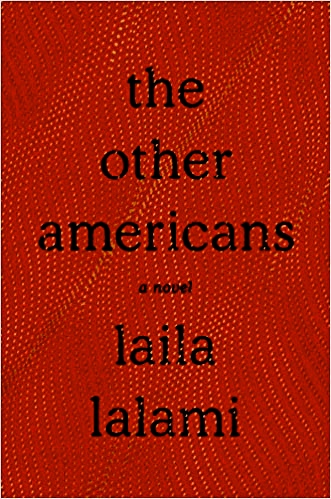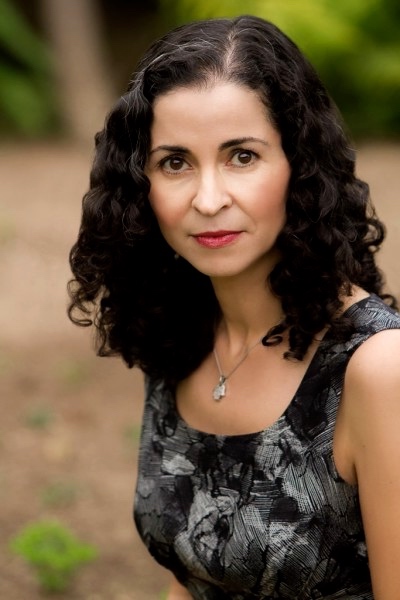“My father was killed on a spring night four years ago, while I sat in the corner booth of a new bistro in Oakland. Whenever I think about that moment, these two contradictory images come to me: my father struggling for breath on the cracked asphalt, and me drinking champagne with my roommate, Margo. We were celebrating because Margo had received a grant from the Jerome Foundation…her second big commission that year.” – Nora Guerraoui, primary speaker.
 With an opening as dramatic as this one by author Laila Lalami, any reader could be excused for thinking that this novel might be a well-described, classic whodunit. While the novel does contain a search for the culprit in what appears to be an intentional, hit-and-run killing of an immigrant who has just closed up his cafe and walked across the parking lot to his car, it would do this intense, character-based novel a disservice to reduce it to such a cliched summary. The reader soon learns that at the moment when Driss Guerraoui is killed by a car, his daughter Nora is at a bistro in Oakland drinking champagne to celebrate her roommate’s success as a composer. Nora herself is hoping for similar success. When the phone call from home interrupts their celebration, she cannot believe the news, but somehow “a bag is packed,” and she drives from Oakland home to the Mojave, dreaming up alternative explanations for the news – maybe the body was misidentified, maybe the hospital mixed up some records. When she arrives at home, it is difficult for her to believe that her father is not there in the house. He still feels present “in the half-empty packet of Marlboros on the windowsill, the frayed slippers under the coffee table, the tooth marks on the pencil that stuck out from the book of crossword puzzles.” The armchair where he usually sits “still bore the imprint of his body.” She is puzzled by the questions being asked by the detective who arrives, and she has no interest in whether her father used drugs, had money troubles, gambled, or had any enemies. She wants to know who was driving, how they hit him, why they fled.
With an opening as dramatic as this one by author Laila Lalami, any reader could be excused for thinking that this novel might be a well-described, classic whodunit. While the novel does contain a search for the culprit in what appears to be an intentional, hit-and-run killing of an immigrant who has just closed up his cafe and walked across the parking lot to his car, it would do this intense, character-based novel a disservice to reduce it to such a cliched summary. The reader soon learns that at the moment when Driss Guerraoui is killed by a car, his daughter Nora is at a bistro in Oakland drinking champagne to celebrate her roommate’s success as a composer. Nora herself is hoping for similar success. When the phone call from home interrupts their celebration, she cannot believe the news, but somehow “a bag is packed,” and she drives from Oakland home to the Mojave, dreaming up alternative explanations for the news – maybe the body was misidentified, maybe the hospital mixed up some records. When she arrives at home, it is difficult for her to believe that her father is not there in the house. He still feels present “in the half-empty packet of Marlboros on the windowsill, the frayed slippers under the coffee table, the tooth marks on the pencil that stuck out from the book of crossword puzzles.” The armchair where he usually sits “still bore the imprint of his body.” She is puzzled by the questions being asked by the detective who arrives, and she has no interest in whether her father used drugs, had money troubles, gambled, or had any enemies. She wants to know who was driving, how they hit him, why they fled.
 As the main character here, Nora will spend several weeks trying to find out the answers to these questions, getting to know everyone with whom her father had contact and his history of problems with one of the neighbors of his cafe. Nora’s own friendships from her school days, newly ignited, and her difficulties with some members of her own family are also explored. As the novel gets underway, over a dozen characters from varied backgrounds regularly share their points of view, speaking directly to the reader about their lives, about the Mohave Desert community where they live, and about their relationships with each other. The victim and his family, who provide the primary points of view, are Muslims from Morocco – the victim, Driss, commenting on his marriage and his business, and, incidentally, his atheism; his wife Maryam, a traditional Muslim woman whose idea it was to escape Casablanca as soon as the riots and threats of revolution began there in 1981; his free-thinking daughter Nora, a musician and composer studying in Oakland, California, hoping to earn a live performance in a music festival; and his daughter Salma, a dentist who adheres to a traditional Muslim point of view and lifestyle.
As the main character here, Nora will spend several weeks trying to find out the answers to these questions, getting to know everyone with whom her father had contact and his history of problems with one of the neighbors of his cafe. Nora’s own friendships from her school days, newly ignited, and her difficulties with some members of her own family are also explored. As the novel gets underway, over a dozen characters from varied backgrounds regularly share their points of view, speaking directly to the reader about their lives, about the Mohave Desert community where they live, and about their relationships with each other. The victim and his family, who provide the primary points of view, are Muslims from Morocco – the victim, Driss, commenting on his marriage and his business, and, incidentally, his atheism; his wife Maryam, a traditional Muslim woman whose idea it was to escape Casablanca as soon as the riots and threats of revolution began there in 1981; his free-thinking daughter Nora, a musician and composer studying in Oakland, California, hoping to earn a live performance in a music festival; and his daughter Salma, a dentist who adheres to a traditional Muslim point of view and lifestyle.

At the Rose Hills Cemetery where Driss was buried, the lawn sloped into a valley, all of it a deep shade of green, in spite of the drought.
The first non-family character to provide a primary point of view is Jeremy Gorecki, a Marine veteran of the Iraq War and former high school admirer of Nora, a detective who is investigating this case. Another early character is Efrain, an immigrant from Mexico who was riding his bike home from work and became an unwilling witness to the crash. Efrain, who works as a carpet cleaner by day and laundry washer for a motel at night, is an illegal alien who has two children born in the US. He tells the reader that “Everything I did was for them. Or didn’t do, you might say.” He convinces himself that he didn’t see what he saw and does not know if the car was white or silver, its make, or model. “All I saw was a man falling to the ground.” Racial and cultural prejudice is part of life here, and it does show itself, often accidentally. Lalami, however, does not use her novel to castigate the community and, by extension, her silent readers. She simply presents the facts and leaves it up to the reader to draw conclusions – and when Lalami presents the facts, they are so vividly presented that no reader can fail to be moved by them.

When Jeremy Gorecki and Nora were high school students they went on a field trip with their class. Nora loved the Frank Gehry-designed Disney Hall; Jeremy thought it a “monstrosity.”
Over a dozen characters give additional insights into their own lives and backgrounds while also revealing ordinary life in the Mojave community. A large number of characters is often a warning sign that a reader might have difficulty keeping track of them all, but that is not the case here. Moroccan author Laila Lalami creates memorable, often unique, characters whose lives vibrantly reflect not only their personalities and cultures but also the times in which they are living. Soon after the novel begins, many readers will become so engrossed by the unfolding personalities and the special insights they shed on each other that they feel as if they are coming to know these characters personally as the characters make unforgettable, individual marks on the action. While Marine veteran Jeremy Gorecki is doing well, despite the horrors of war, his fellow Marine and friend Fierro has found that his civilian life is an unpredictable series of disasters. Detective Erica Coleman, an African-American mother who is working this case, must deal with hidden racism in the community; and a local person who eventually admits to having accidentally struck and killed the victim, is convincingly portrayed as someone who did not recognize the horror of that night.
Gradually, the reader becomes part of the lives of these and other characters, and when Nora, who is recovering from a failed relationship with a married man at the university in California, becomes interested in one of the characters here, the growing love story adds interest and emotion to the novel. Raw racism, which also appears here, is presented in a way which causes the reader to feel sad and disappointed, rather than outraged, a result of the fact that author Lalami has presented the characters as people, not as symbols to be rejected automatically. As the action continues into the months following the death of Driss, all the major characters learn and come to new and sometimes unexpected, conclusions, a rare event in many other contemporary novels. The final outcomes for many of them will please and reward the thoughtful reader of this well developed and thought-provoking novel. High on my Favorites list for 2019.
Photos. The author’s photo is from http://www.lyceumagency.com
The Rose Hills Cemetery photo appears on http://bayercemeterybrokers.com
Disney Hall, designed by architect Frank Gehry, was the site of a field trip for Jeremy Gorecki and Nora Guerraoui when they were in high school. She loved its design. He thought it a “monstrosity.” https://www.latimes.com
Set in the Mohave, the novel makes many references to Joshua Tree Park. https://allhdwallpapers.com/

